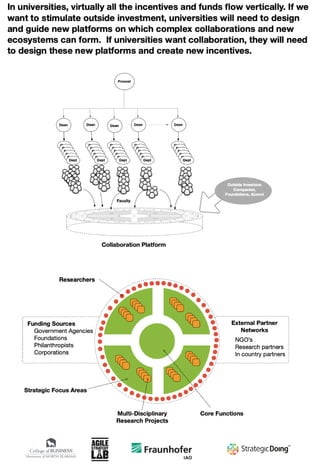Our Universities Need a Redesign
Our universities need a redesign. The good news: the changes are not dramatic, and they can be managed. The bad news: those that do not change will be disrupted. Christensen warned us. (https://amzn.to/2vw484E) The needed changes go beyond cost-cutting. It's a mind shift, a deep embrace of multidisciplinary approaches to complex, "wicked" challenges. This shift has proven difficult. It requires three adjustments among faculty. First, they need to bridge their disciplinary divides and learn how to collaborate. Second, they need to move into what MIT professor Donald Schon called the "swampy lowlands" of real world problems. Third, faculty need to be open to the new forms of knowledge that are generated in the lowlands. (http://bit.ly/2PEB6qa) Many academics spend their time publishing abstruse technical papers in obscure academic journals read by a few dozen people. Why? That's the one sure path to tenure and promotion. In 1990 Ernest Boyer, published a seminal report: Scholarship Reconsidered. (http://bit.ly/Boyer1990). Boyer argued that faculty reward systems were too narrowly drawn. It's time to recommit to Boyer's path and embrace new experiments in university design. We've been working on this challenge with our colleagues from Fraunhofer.

